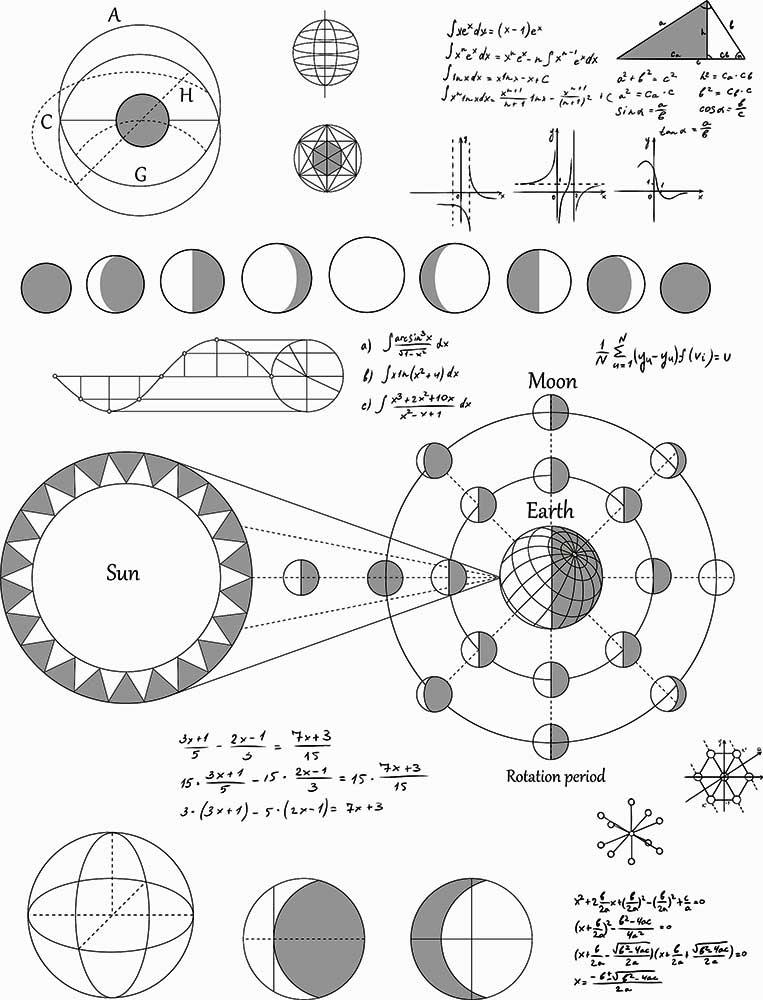It’s that time of the month again
30.07.2019 LifestyleBasics
As anyone who resides on this planet should be aware, the moon orbits earth on an approximately 29.5-day cycle, known as the synodic month, and displays a different profile to our planet every day. Timing events by lunar phases has a long history in all cultures of the ancient world, though they differ somewhat on the beginning of the lunar month. ‘Waxing’ is the growth of the moon from the new moon (i.e. dark) to the full moon, and ‘waning’ is its decline.
Ancient and modern wisdom
Hesiod, the 7th-8th century BC Boeotian Greek poet, in his didactic poem Works and Days, relates that the 8th day of the waxing moon (i.e. after the new moon) is good for gelding boars and bulls, but advocates waiting until the 12th day to neuter mules. Also, on the 12th day he recommends shearing sheep and picking fruit, and counsels women to set up their looms. To unwind after all the hard work, Hesiod recommends opening a wine jar on the 27th day of the lunar month.
Locally, Albert Hauser’s 1973 Bauernregeln, or ‘farmers’ rules’, is a go-to guide for correctly timing tasks by the lunar phase. He recounts that hair and nails be cut on the 3rd day after the new moon, and if one cuts children’s hair on that day in the sign of Aries, they will develop lovely curls. Toenails are to be cut in a waxing moon to prevent ingrowth, with the sign Scorpio promoting especially beneficial growth. Chimneys built during a waxing phase are reputed to draw better, and wells are only to be dug in this phase, lest they lose their water to the depths. Conversely, laundry washed during an ascending phase will cause flees to proliferate.
Why does it matter?
Why are these activities linked with the phases of the Moon? Some postulate that the phenomenon of sap rising in certain plants during the waxing phase of the cycle, thus encouraging growth, has influenced what many consider superstitious beliefs. But there is some academic collateral for this view.
Prof. Ernst Zürcher of the Bern University of Applied Sciences has studied lunar rhythmicity’s relation to plant and tree growth and has concluded that statistically significant connections do exist. Numerous 20th-century horticultural studies found vegetable, floral, and cereal species sown two days before a full moon showed better germination, stronger growth, and produced a more bountiful harvest than seeds sown two days before a new moon.
Homegrown adages abound. The French maxim Bois tendre en cours/Bois dur en décours translates to ‘soft wood in a waxing moon, hard wood in a waning moon’. Another saying from the Jura relays ‘when waxing, cut firewood; when waning, cut wood for building’. Wood felled in winter months during a waning moon is reputed to be stronger and more resistant to rot, and therefore superior for construction, while wood harvested during a waxing phase, with its higher water content, burns better when dried due to superior porosity. Wood for barrel staves, wood chimney planks, and violin sounding boards each have their own particular harvesting times.
Or does it?
So, about that hair appointment. Check the moon and make sure the Zodiac sign is favourable, unless you don’t want curls. Otherwise, go whenever you can get in.
Alex Bertea




